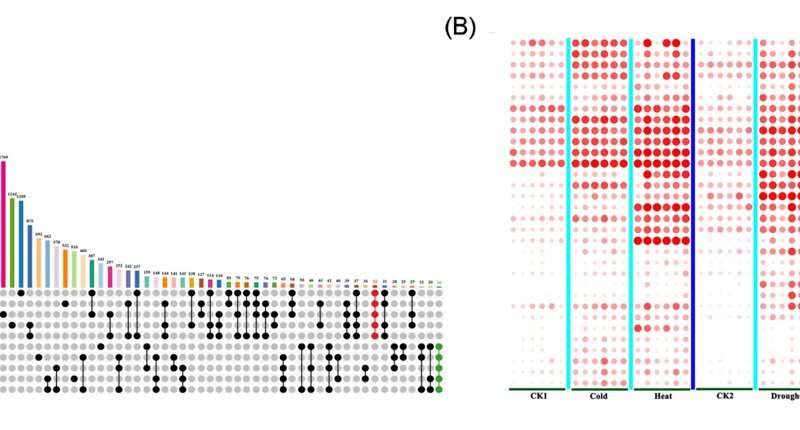New advances in integrating mechanisms of multiple stress response in conifers

The proper response to various abiotic stresses is essential for plants' survival to overcome their sessile nature, especially for perennial trees with very long-life cycles. However, in conifers, the molecular mechanisms that coordinate multiple abiotic stress responses remain elusive.
This article has been published on Horticulture Research, titled "An ethylene-induced NAC transcription factor acts as a multiple abiotic stress responsor in conifer."
Here, the transcriptome response to various abiotic stresses like salt, cold, drought, heat shock and osmotic were systematically detected in Pinus tabuliformis (P. tabuliformis) seedlings. We found that four transcription factors were commonly induced by all tested stress treatments, while PtNAC3 and PtZFP30 were highly up-regulated and co-expressed.
Unexpectedly, the exogenous hormone treatment assays and the content of the endogenous hormone indicates that the upregulation of PtNAC3 and PtZFP30 are mediated by ethylene. Time-course assay showed that the treatment by ethylene immediate precursor, 1-aminocyclopropane-1-carboxylic acid (ACC), activated the expression of PtNAC3 and PtZFP30 within 8 hours.
We further confirm that the PtNAC3 can directly bind to the PtZFP30 promoter region and form a cascade. Overexpression of PtNAC3 enhanced unified abiotic stress tolerance without growth penalty in transgenic Arabidopsis, and promote reproductive success under abiotic stress by shortening the lifespan, suggesting it has great potential as a biological tool applied to plant breeding for abiotic stress tolerance.
This study provides novel insights into the hub nodes of the abiotic stress response network as well as the environmental adaptation mechanism in conifers, and provides a potential biofortification tool to enhance plant unified abiotic stress tolerance.
More information:
Fangxu Han et al, An ethylene-induced NAC transcription factor acts as a multiple abiotic stress responsor in conifer, Horticulture Research (2023). DOI: 10.1093/hr/uhad130
Provided by NanJing Agricultural University